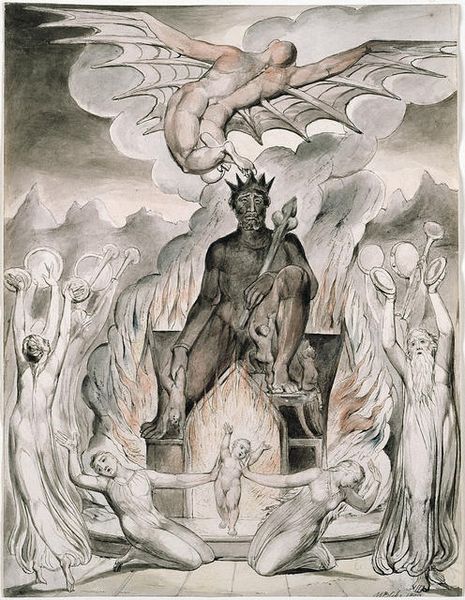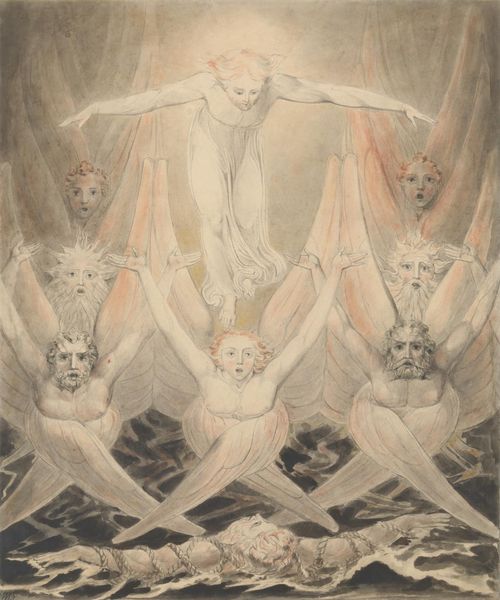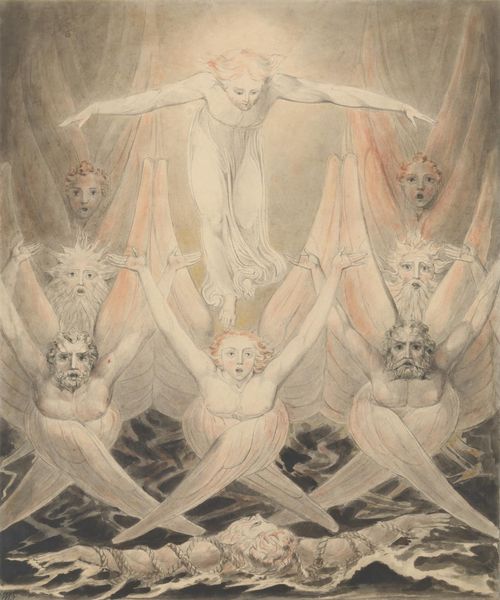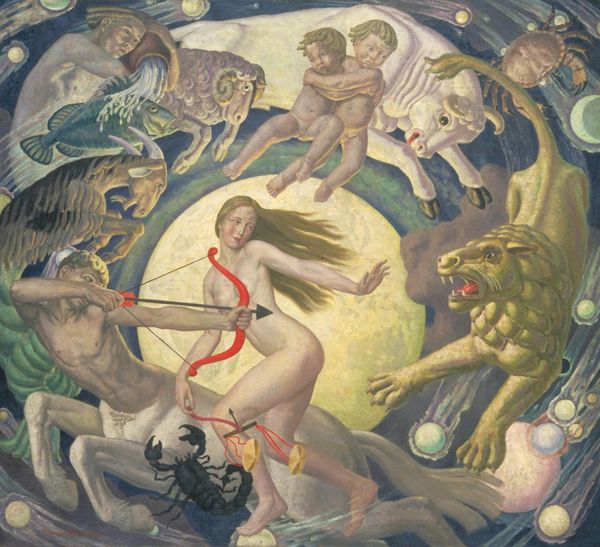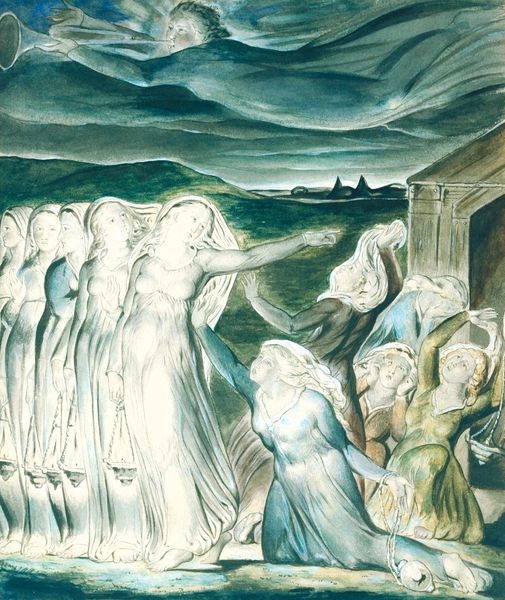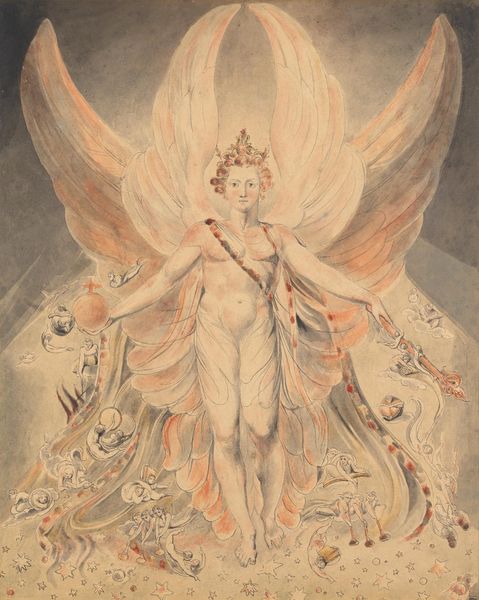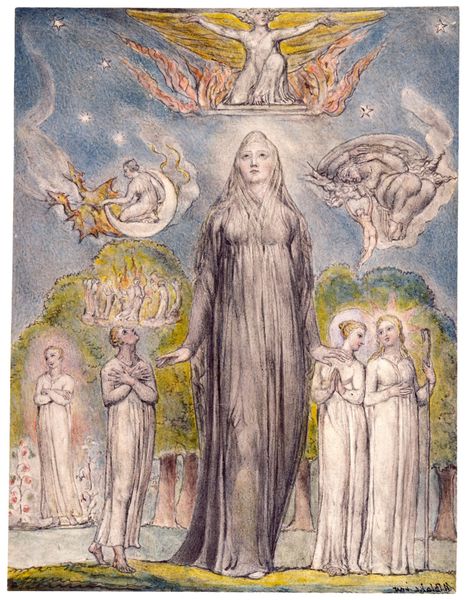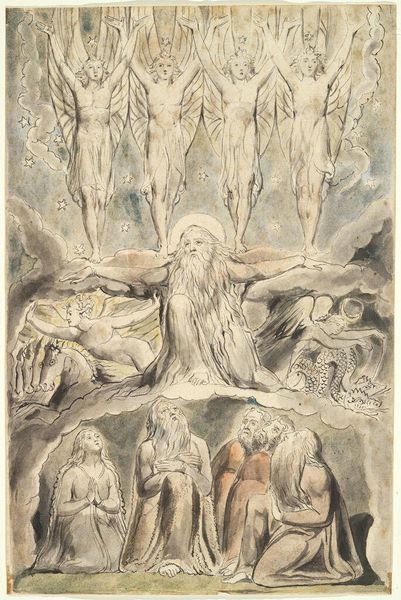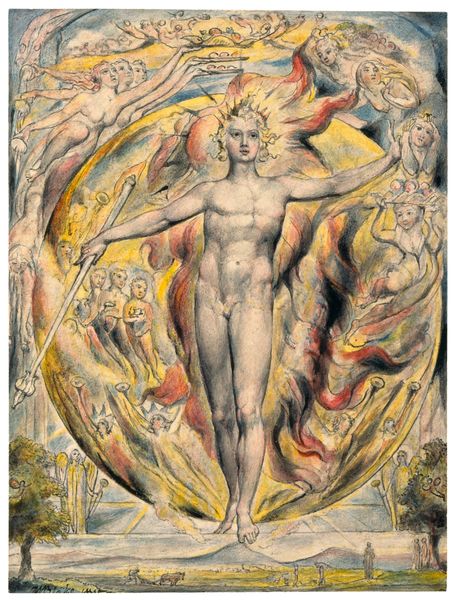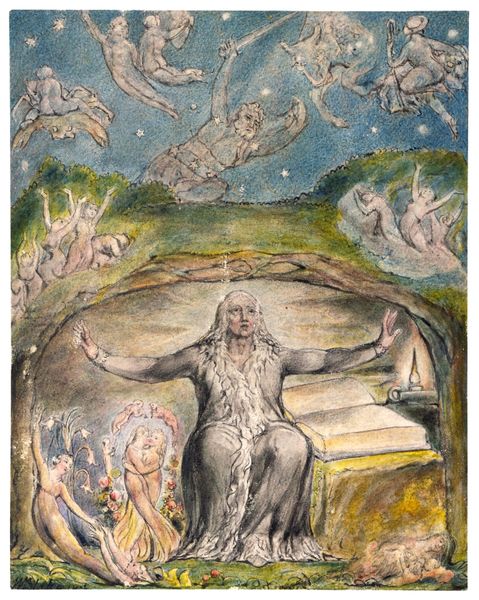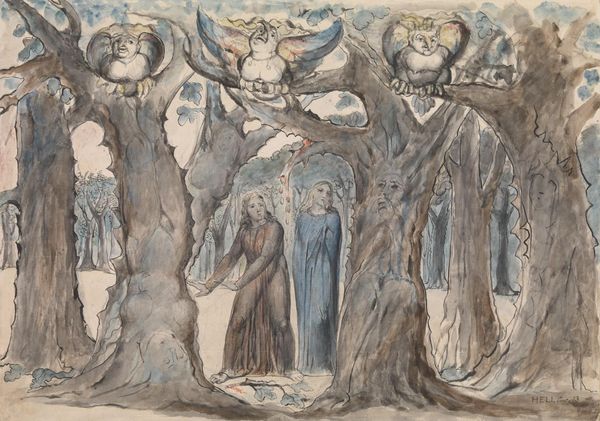
drawing, paper, ink
#
drawing
#
allegory
#
fantasy art
#
fantasy-art
#
figuration
#
paper
#
ink
#
romanticism
#
history-painting
#
northern-renaissance
Dimensions: 179 x 280 cm
Copyright: Public domain
Curator: William Blake's ink and watercolor drawing, "When the Morning Stars Sang Together," created around 1820, offers a profound vision of cosmic creation, doesn't it? Editor: It certainly does. My first impression is one of stark contrast – the radiant figures above seeming almost ethereal against the dark, earthbound group below. There's an intense verticality, pulling the eye upward. Curator: The imagery resonates with Blake’s own complex cosmology and socio-political critique. He draws inspiration from the Book of Job, depicting God amidst his creation. Think about Blake's radical dissenting views, his rejection of institutionalized religion, and how those sentiments shape his artistic interpretations of biblical scenes. Editor: Absolutely. The visual language here is dense. We see the figures of God and angels but also symbols that echo themes of judgment, the animalistic representations perhaps signify chaos tamed. It evokes creation myths that run across different cultures – not just Judeo-Christian. Those angels up top, they radiate something… is it triumph? Adoration? Curator: I see both, even something bordering on melancholic awareness. Note how Blake positions the figures representing humanity at the bottom, enclosed and contemplative. There’s a visual weight that signifies the earthly condition in all its uncertainty and potential for damnation, right? This speaks volumes about power dynamics inherent in creation narratives—who controls the narrative, and for whose benefit? Editor: And that bearded central figure, his arms outstretched. Is he benevolent, or imposing his will? That gesture of open embrace can also appear like dominion. I'm particularly struck by the stars peppered through the dark blue space above – each star a little point of light but lost in a vast unknown. They become symbolic, right? Lost knowledge. Divine sparks yet to be awakened on earth. Curator: That tension between light and shadow, knowledge and ignorance, perfectly encapsulates Blake’s own revolutionary ethos. He championed individual imagination against what he perceived as oppressive forces of reason and dogma. Editor: Examining the symbolism within its artistic and historical context truly enriches our understanding. Thank you! Curator: Agreed. It's through these multilayered interpretations that we engage more fully with Blake's revolutionary art.
Comments
No comments
Be the first to comment and join the conversation on the ultimate creative platform.
